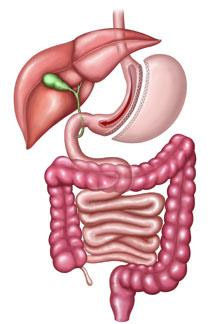A sleeve gastrectomy is a restrictive surgical weight loss procedure that limits the amount of food you can eat and helps you feel full sooner. In this procedure, a thin, vertical sleeve of stomach is created and the rest of the stomach is removed. The sleeve is about the size of a banana. The surgery is usually done using a tiny camera that is placed in your belly. This type of surgery is called laparoscopy. The camera is called a laparoscope. It allows your surgeon to see inside your belly.

In a gastric sleeve operation, surgeons remove a large portion of the stomach in a vertical fashion, leaving the organ about the size and shape of a banana or sleeve. Photo courtesy of Ethicon Endo-Surgery, Inc., 2010
In this surgery:
- Your surgeon will make 2 to 5 small cuts in your abdomen.
- The surgeon will pass the laparoscope and the instruments needed to perform the surgery through these openings.
- The camera is connected to a video monitor in the operating room. Your surgeon will look at the monitor to see inside your belly.
- Your surgeon will insert thin surgical instruments through the other openings.
Your surgeon will remove most (about 80 – 85%) your stomach.
The remaining portions of your stomach are joined together using staples. This creates a long vertical tube or banana-shaped stomach.
The surgery does not involve cutting or changing the sphincter muscles that allow food to enter or leave the stomach
Your surgery may take only 60 – 90 minutes if your surgeon has done many of these procedures.
When you eat after having this surgery, the small pouch will fill up quickly. You will feel full after eating just a very small amount of food.
Risks for vertical sleeve gastrectomy are:
- Gastritis (inflamed stomach lining), heartburn, or stomach ulcers
- Injury to your stomach, intestines, or other organs during surgery
- Leaking from the line where parts of the stomach have been stapled together
- Poor nutrition, although much less than with gastric bypass surgery
- Scarring inside your belly that could lead to a blockage in your bowel in the future
- Vomiting from eating more than your stomach pouch can hold
- GERD (reflux disease) seems to be common occurrence after surgery, but in most cases resolved spontaneously
The majority of sleeve gastrectomy procedures are performed using a laparoscopic technique. Laparoscopic (minimally invasive) surgery results in a shorter hospital stay, faster recovery, smaller scars, and less pain than open surgical procedures.